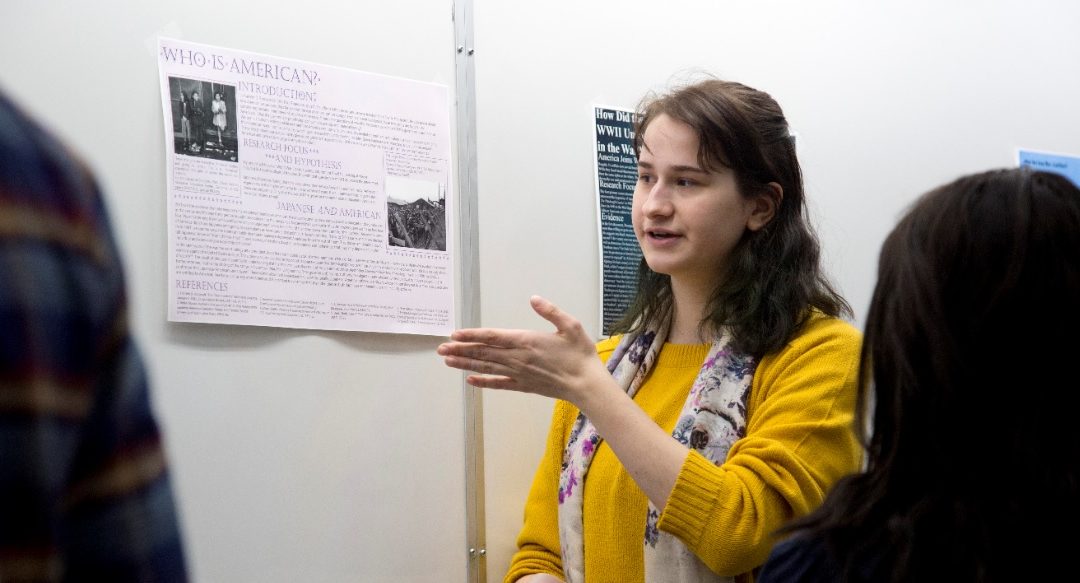By Derek Murray, History Department
Making Research More Engaging, Collaborative, and Authentic
A few years ago, I decided to no longer have a traditional research paper as the major assignment in my introductory-level history courses. The ability to compose a well-researched, evidence-based argument is one of the hallmark skills that students develop in history courses and programs. Many students take to these kinds of projects with enthusiasm. But I found that most of the papers turned in to me were uninspired. And aside from a few keen students who shared their work with peers or family, I was the only one who read the essays. Most likely went straight in the bin at the end of the term. I was left with the question: How can I help students develop the component skills required to build and communicate a reasonable and responsible argument, but in a way that will allow them to connect and learn from each other in a collaborative and supportive environment?
The answer was obvious when I looked to my own discipline. One thing that historians—and scholars in many other disciplines—do is to present “works in progress.” Such presentations often come in the form of a paper at a conference or public talk, but increasingly they come as posters, especially by grad students and early-career academics. This is a forum in which we can share ideas, display findings visually, and have conversations instead of a one-way transmission of information. I now assign a poster project in place of a research paper in all my 100 and 200 level courses.
Building Critical Thinking Skills
It is too much to ask a student in a first-year course, who has maybe never taken history before, to present a polished research paper. That’s not what I want from them anyway. I want them to show me that they can find and analyze primary sources, that they can identify evidence in a source, that they can make an inference from that evidence, and that they can put forward and confidently discuss a reasonable and responsible interpretation, subject to further research. The paper can come later.
The poster project also allows students to engage with their peers in a fun, supportive setting. Students put their posters up around the classroom and then take turns (half and half) standing by their poster while the other students mingle, ask questions, and provide constructive feedback. I am there to prompt conversations, ask questions, keep students on track, and generally facilitate the process. Students are graded based on the quality of their final product, not on their presentation. But, they get the chance in the presentation to defend their position and I get the chance to challenge them to take their learning deeper. It’s a win-win. After facilitating this project multiple times, I learned that my role can go beyond giving a grade. I can use this as an opportunity to emphasize the practical skills that one learns in history.
Taking Knowledge Into the World
What do students say? Many are at first frustrated at how little room they have on the poster! It forces them to be concise and judicious. The most frequent comment I get from students is that the process has helped them to be more confident in discussing history outside the classroom. By presenting their interpretation and evidence multiple times, they get better at developing their own informed opinions and are able to engage in conversation or confront misunderstandings and historical prejudices. When students come back after a holiday break and tell me that they brought up what they learned in class at the family dinner table, I know I’ve done my job!

Recent Comments